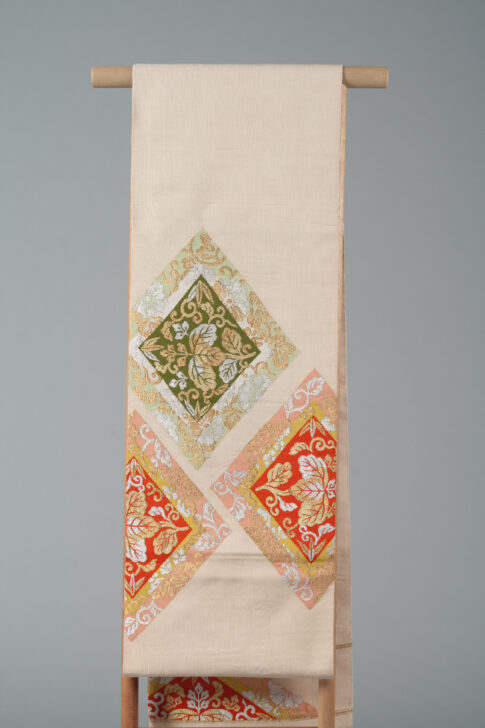Obi
Japanese

Description
Subject Matter:
This is a Nishiji, Nishiki, and Fukuro Obi in Otaiko gara.
The Silver and Gold brocade are Kiri Take, a bamboo and paulownia pattern while the rhombi are in arabesque Karakusa patterning motifs. The orientation of the Karakusa and Kiri Take motifs pertain to the position and placement in which the designs are viewed once worn in a Otaiko tie.
Nishijin-ori textiles were developed in the Nishijin area of Kyoto city and has dominated the production of high-quality woven textiles since the fifteenth century. Nishiki is a type of vibrant silk brocade with vivid and luxurious images using various colorful and metallic (mainly gold and silver). Nishiki brocade is mainly produced in the Nishijin area of Kyoto. Fukuro Obi is double-layered single sided obi in which two separately woven surfaces and back pieces of cloth are stitched together. This type of obi is typically only worn at weddings or other formal occasions. Gara refers to the orientation, arrangement, and surface area of the patterns and pertains to a specific trend and obi tying style. The patterning in the Otaiko gara type is minimal. A few concentrated spots of patterned motif lie on the obi while the rest is left blank. This style was invented during the Edo period (1615-1868) by the female entertainers in Fukugawa, an entertainment district in present-day Tokyo.
Physical Description:
Pale pink Fukuro (single sided) obi with interwoven silver and gold floral brocade in interwoven rhombi of green, coral, and red.
Usage Rights:
If you are interested in using an image for a publication, please visit https://umma.umich.edu/request-image/ for more information and to fill out the online Image Rights and Reproductions Request Form.